Historic Centre of Bukhara
By Stephen Lioy
What is the Historic Centre of Bukhara?
At more than 2000 years old, the Silk Road city of Bukhara in Uzbekistan is one of the oldest and most complete medieval cities in Central Asia. Remnant historic architecture – both monumental and mundane – make it one of the most vibrant examples of traditional urban lifestyles to be found anywhere in the region.
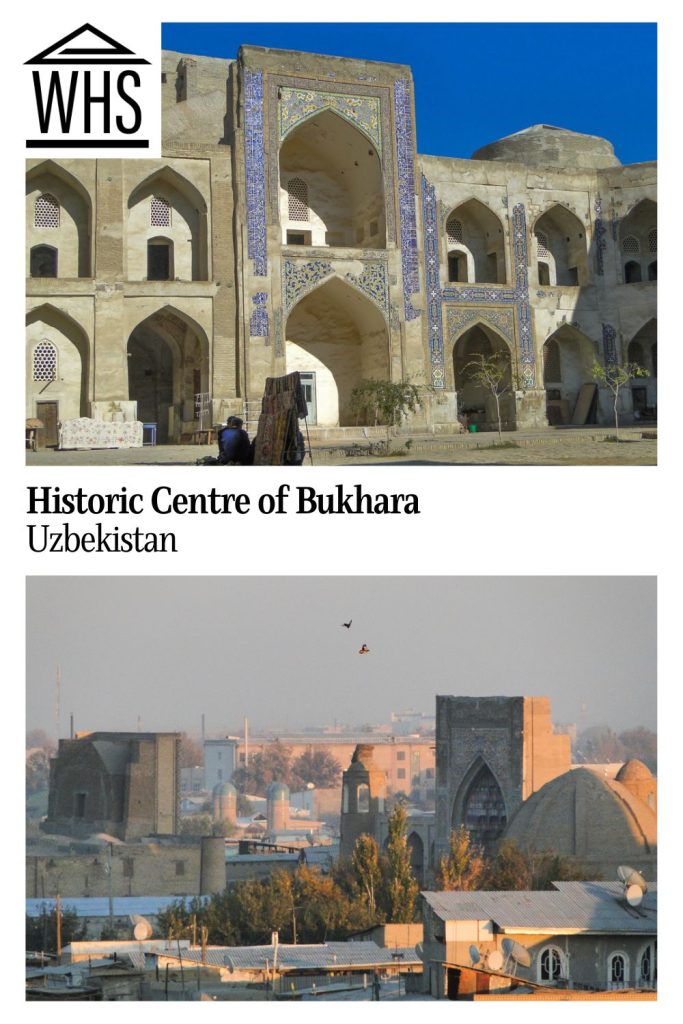
Disclosure: This article contains affiliate links. Making a purchase through an affiliate link will mean a small commission for this website. This will not affect your price. Privacy policy.
The city has a number of monuments dating to the 10th and 11th centuries such as the Ismail Samanai tomb, which UNESCO describes as “impressive in its sober elegance and the best surviving example of 10th century architecture in the whole Muslim world.” Numerous impressive minarets, mosques and madrasahs (religious schools) survive, dating from the 11th to the 17th centuries.
UNESCO points out that the buildings are not what is most important about Bukhara, however. It is “its overall townscape, demonstrating the high and consistent level of urban planning and architecture that began with the Sheibanid dynasty.”
Why is Historic Bukhara a UNESCO World Heritage site?
Bukhara is included on the UNESCO list both for the intactness of its medieval neighborhoods, preserving “its urban fabric to the present day,” and its importance in terms of urban planning. The city’s layout influenced urban planning of other cities over a large area of Central Asia. It is also recognized for the historically important influence it had on the region as a cultural and religious center of the Muslim faith, particularly Sufism.
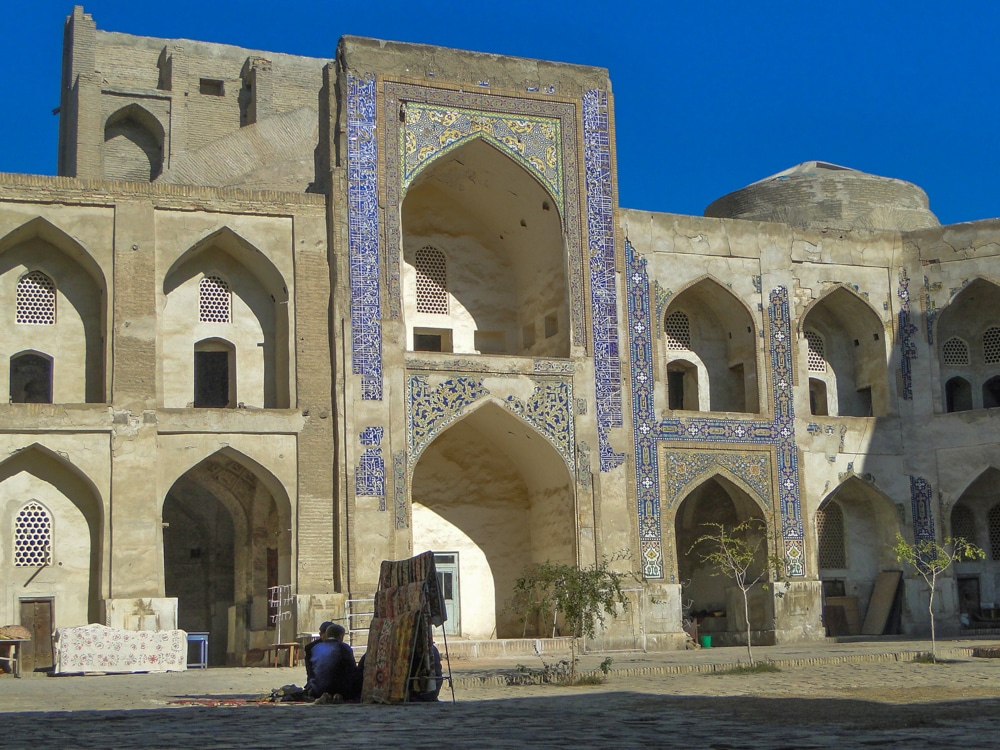
What can you expect on a visit to Bukhara?
I prefer Bukhara over Uzbekistan’s two other Silk Road cities (Samarkand and Khiva) as it strikes the best balance between historic architecture and lived-in urban fabric. While Samarkand’s monuments are perhaps more striking, they are largely islands among the streets of a modern post-Soviet townscape. Khiva’s walled city is more complete (if largely rebuilt), but it feels like an open-air museum that lacks the lived-in feeling of Bukhara.
Bukhara, on the other hand, is a thriving city. Actual neighborhoods surround the most popular historic sites, part of an enmeshed urban landscape that just so happens to have existed in similar form for thousands of years.
I like to start each day with a cup of tea on the Lyabi-Hauz square. I wander off from there to the citadel or mosques or beyond the city to outlying pilgrimage sites, but I always end back at the heart of the city to start and end the day.
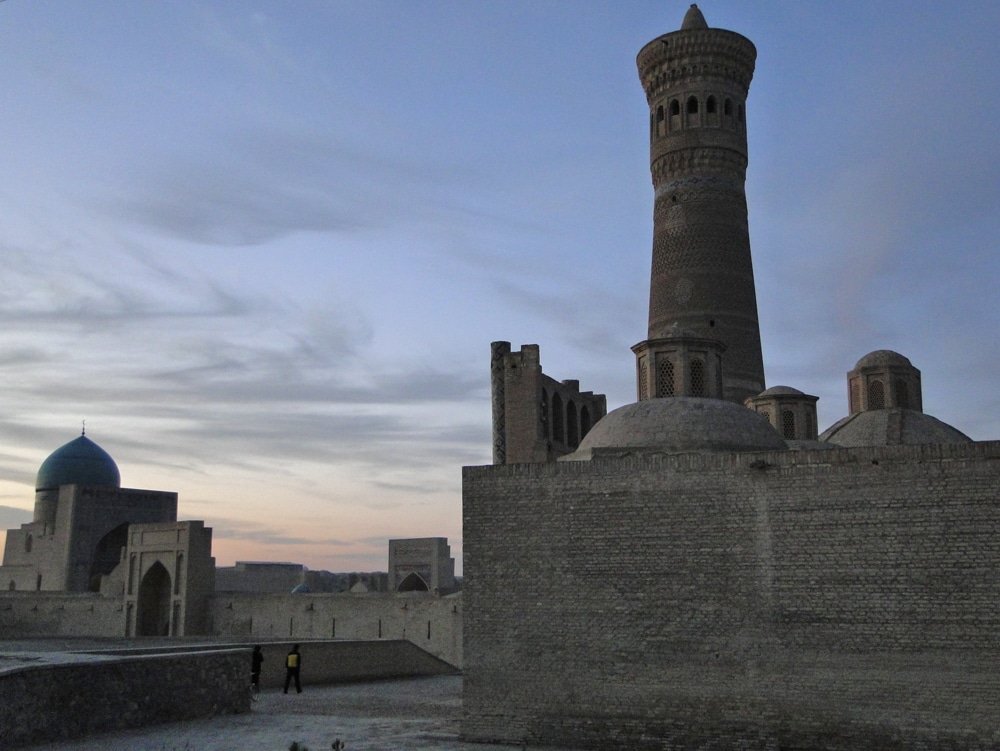
Is the Historic Centre of Bukhara worth visiting?
Bukhara is absolutely worth visiting – in fact, I think it’s probably the single best destination in Uzbekistan with its historic monuments, lovely wandering, and excellent food. Because it is served by high-speed trains from Tashkent and Samarkand, adding it to an itinerary is a breeze.
Several elements of the UNESCO site called “Silk Roads: Zarafshan-Karakum Corridor,” a transnational site with Tajikistan and Turkmenistan, are not far from Bukhara. Itchan Kala (Khiva), another World Heritage site, is further away, in a region northwest of Bukhara.
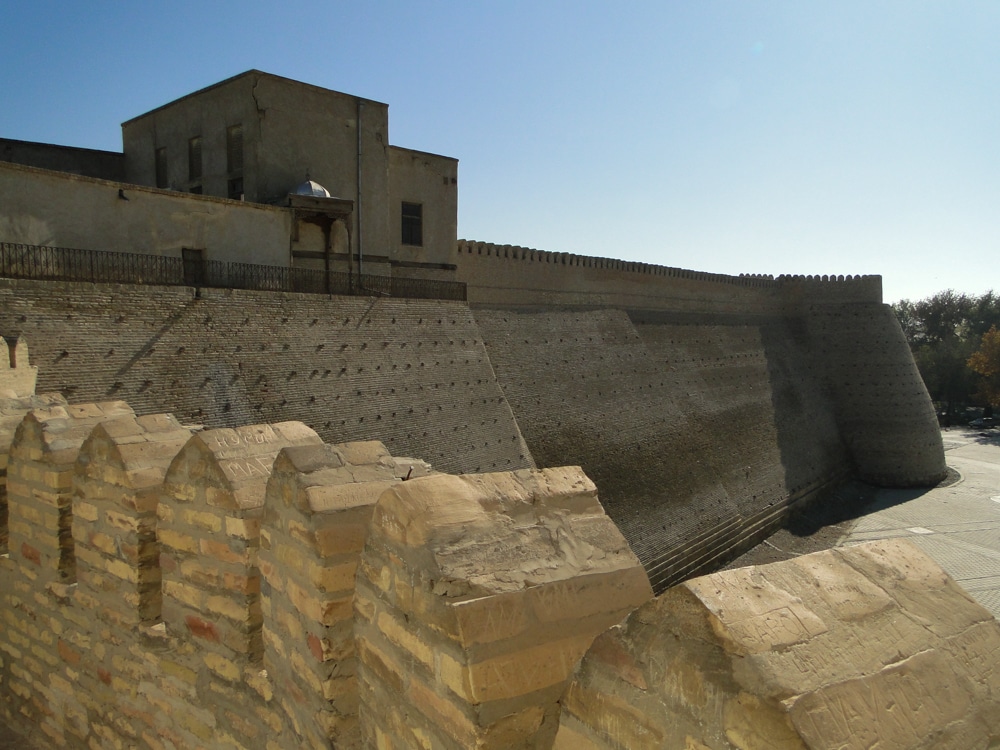
What sorts of travelers would like Historic Bukhara?
Bukhara has something for any traveler who already has an interest in traveling to Uzbekistan. Traditional Islamic architecture covered in mosaics, its historical context and storytelling, its photogenic back alleys where life goes on outside of tourism, and, of course, the food: if you can’t find something that appeals in Bukhara, you’re probably in the wrong country altogether.
Book a full-day or half-day walking tour in Bukhara!
There are also plenty of private or group multi-day tours of Uzbekistan, in case you don’t want to do all the planning yourself!
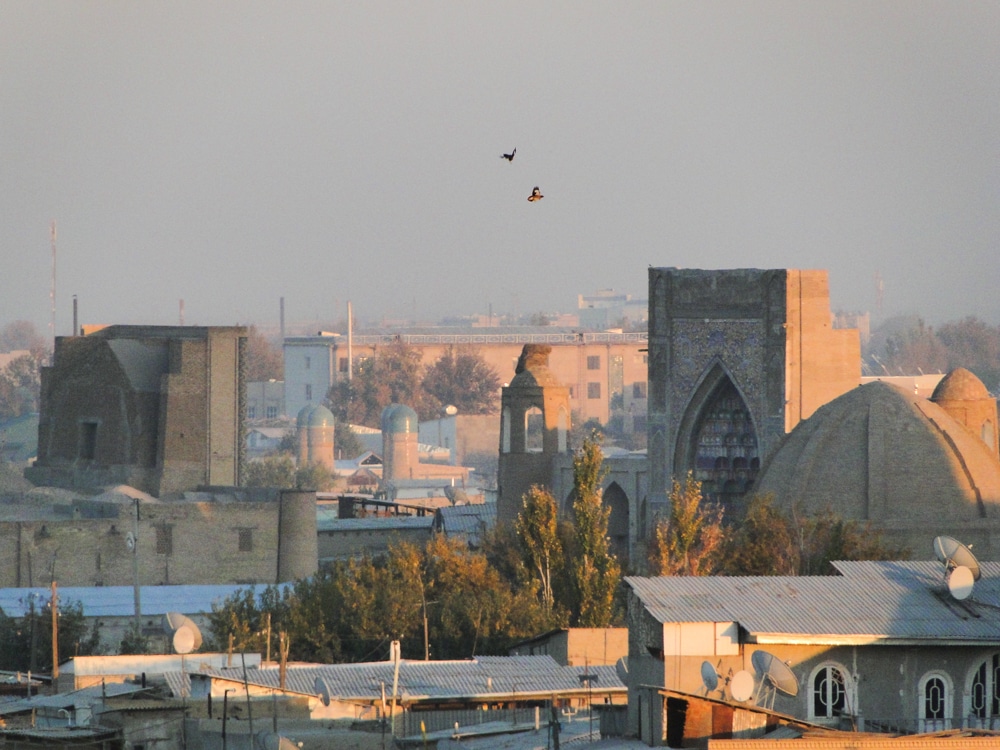
Tips for visiting Bukhara
Bukhara is most magical as the sun rises. In the old town, the streets are empty except for the occasional donkey cart, and the smell of fresh-baked non bread is already wafting through the air among the minarets and towers. In most residential areas, streets are busy with families already fetching water to sweep out street fronts in preparation for another day.
Try to plan ahead and book a hotel near to Lyabi-Hauz – a number of renovated medressahs have been turned into boutique hotels that add an even more immersive aspect to any trip.
The accommodations map below is centered on Lyabi-Hauz square:
Bukhara also makes an excellent gateway to hiking in the Nuratau Mountains, a half-day’s drive from the city to the furthest reaches, which can be built into itineraries as an alternate route to Samarkand.
Where is Historic Bukhara?
Bukhara is approximately 200km (124mi) west of Samarkand and 450km (280mi) southwest of Tashkent. Both are accessible by domestic flights or by car (in 5 and 9 hours, respectively). Much more pleasant than either is the high-speed Afrosiyab train that connects the city to Samarkand in less than two hours and Tashkent in a little over four hours.
For more information about Historic Centre of Bukhara, see the Uzbekistan Tourism Board’s website.
Have you been to Bukhara? If so, do you have any additional information or advice about this UNESCO World Heritage site? Please add your comments below!
